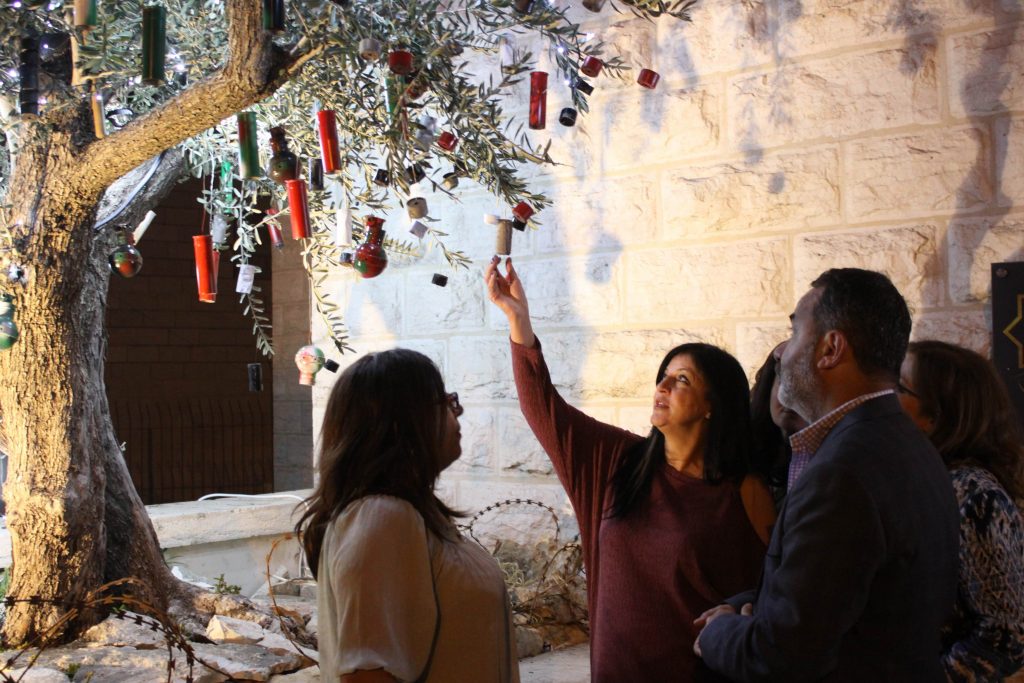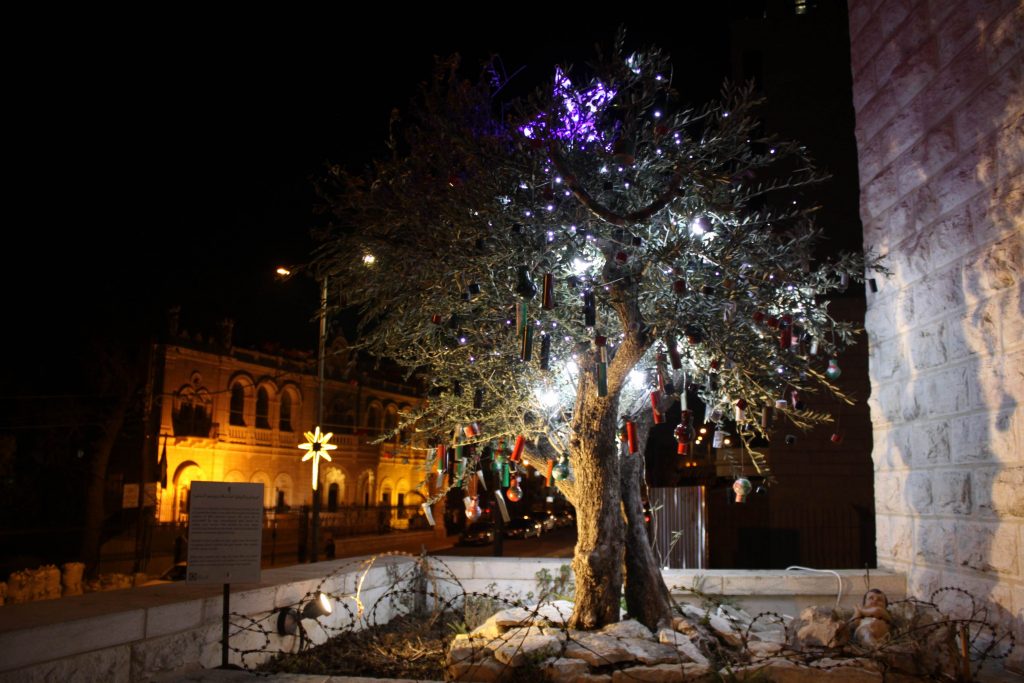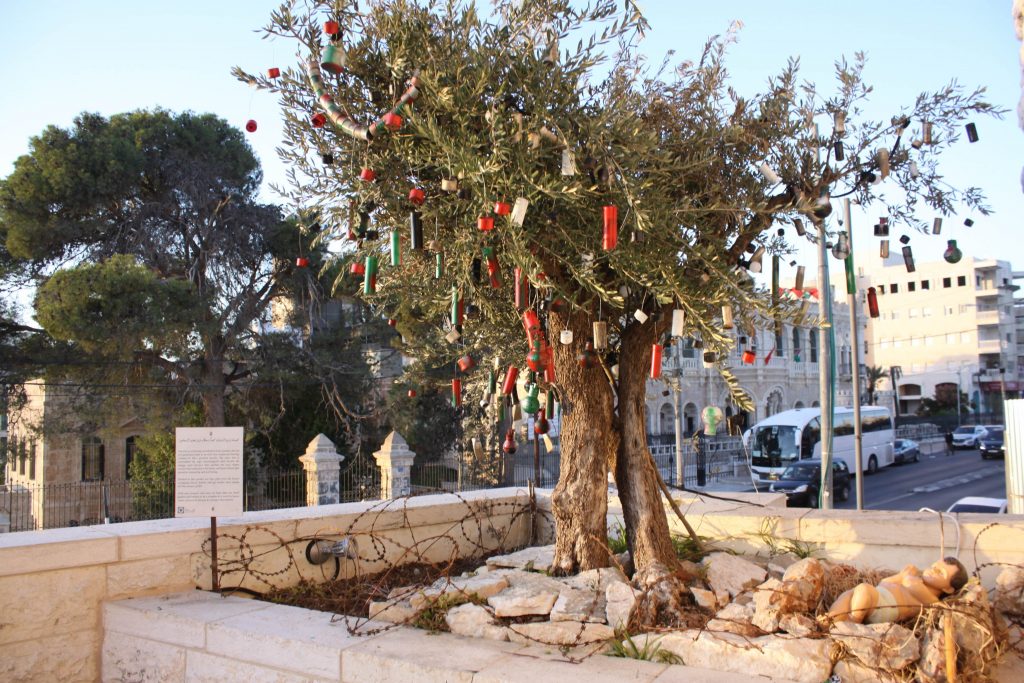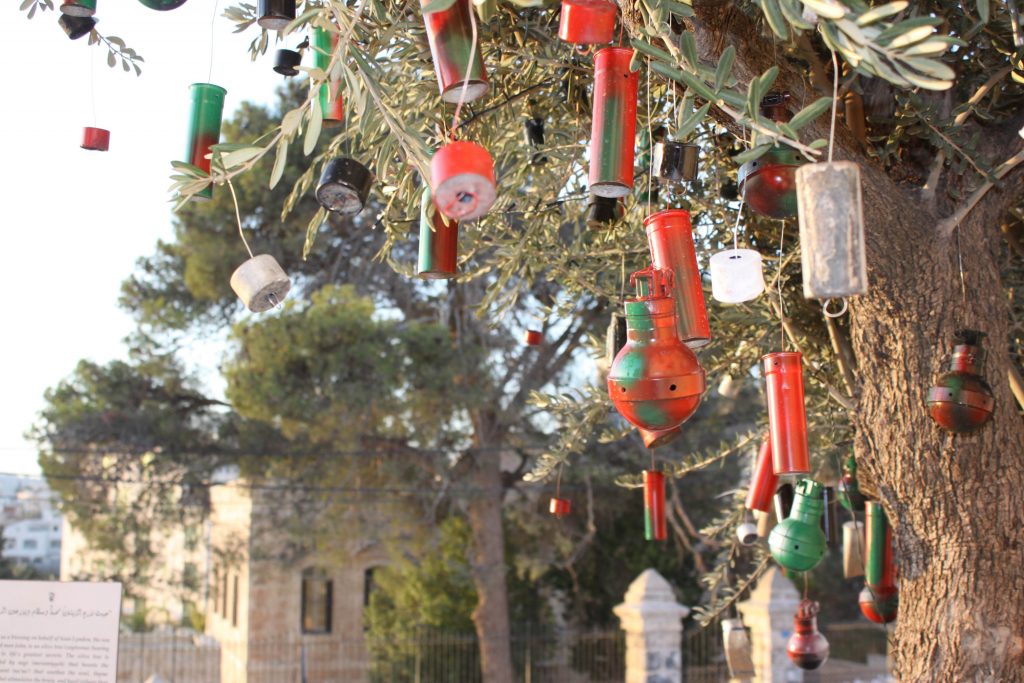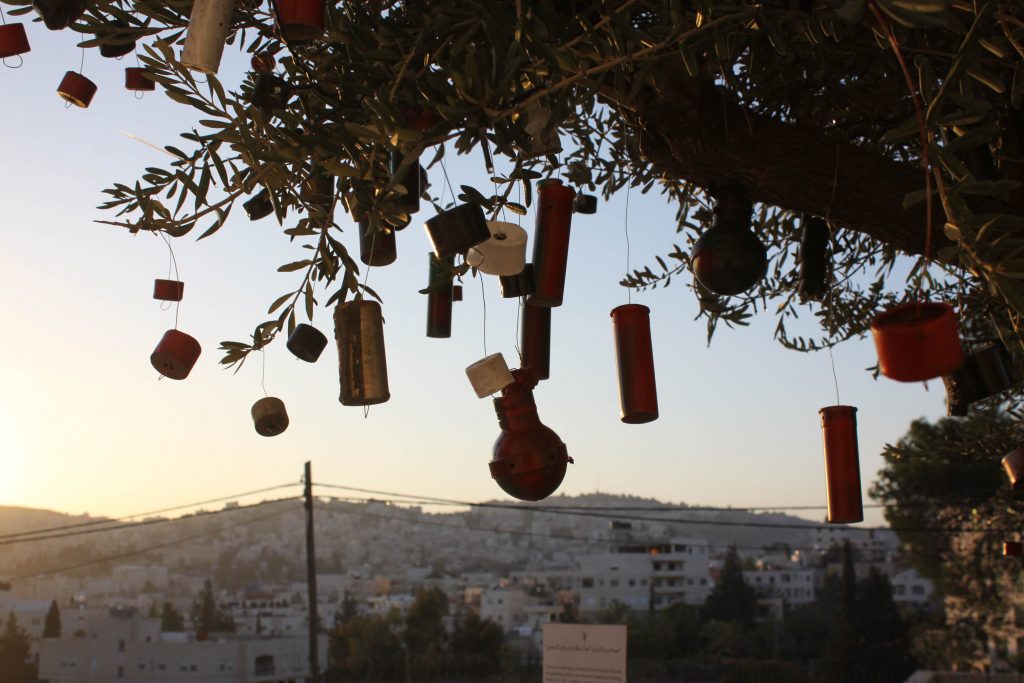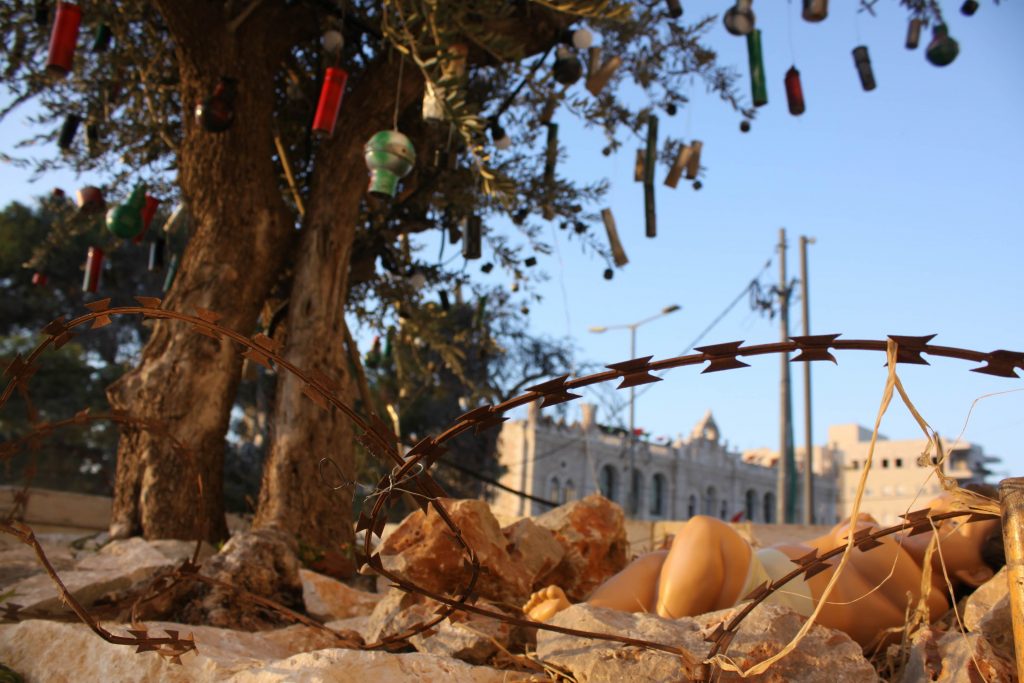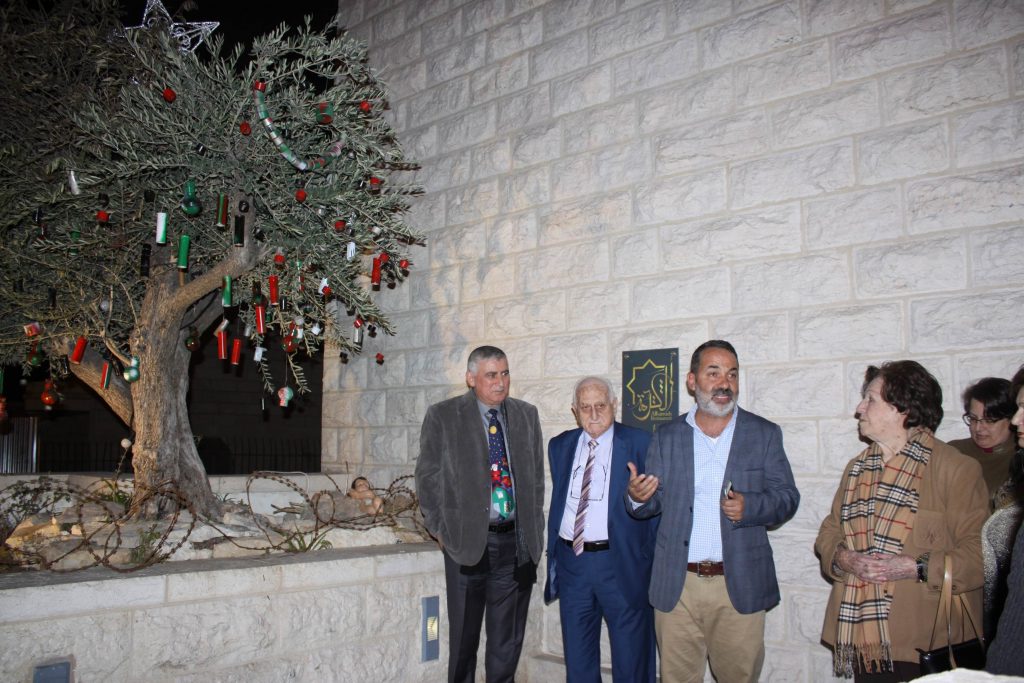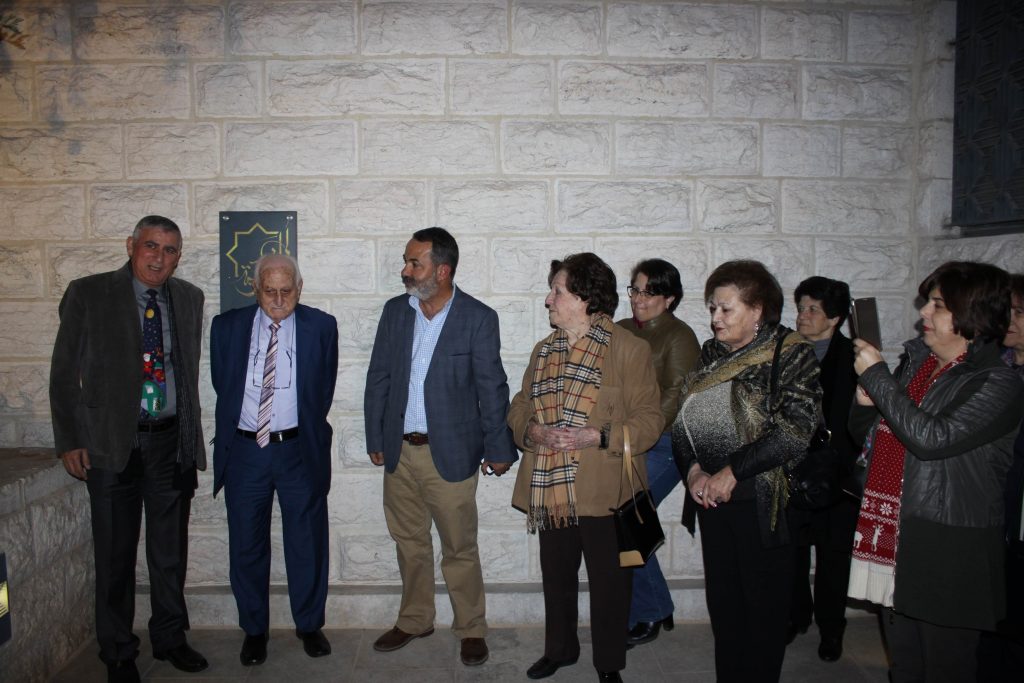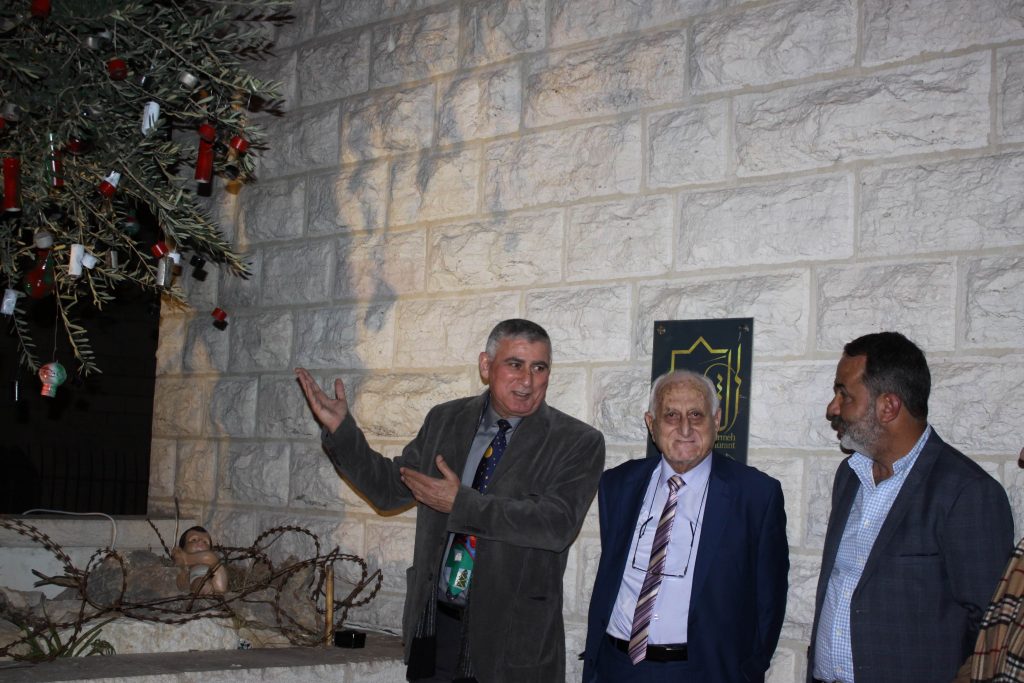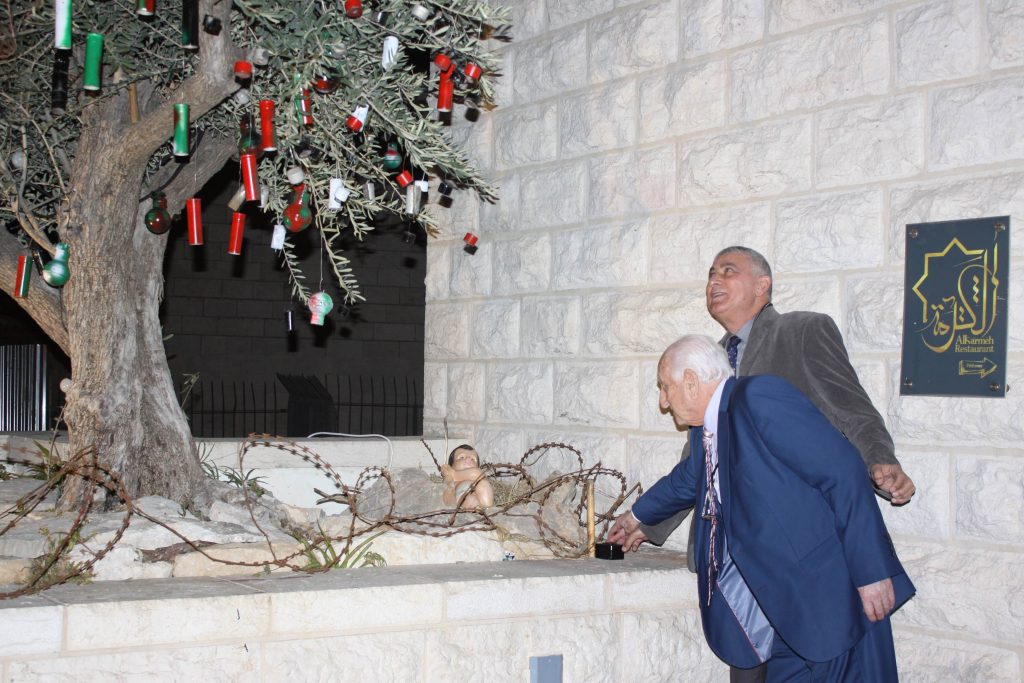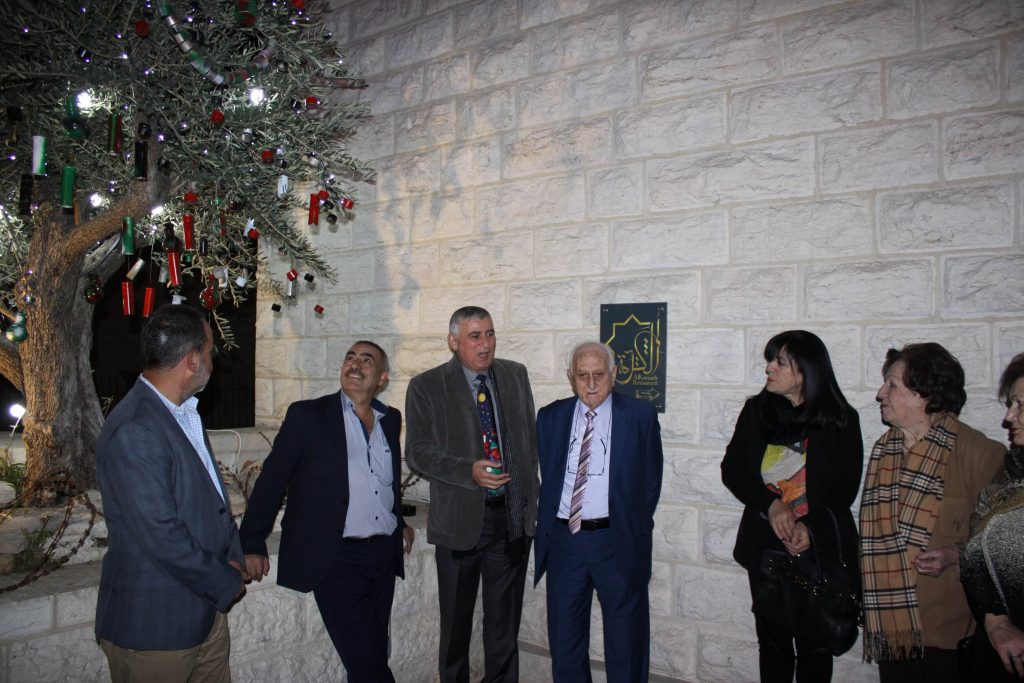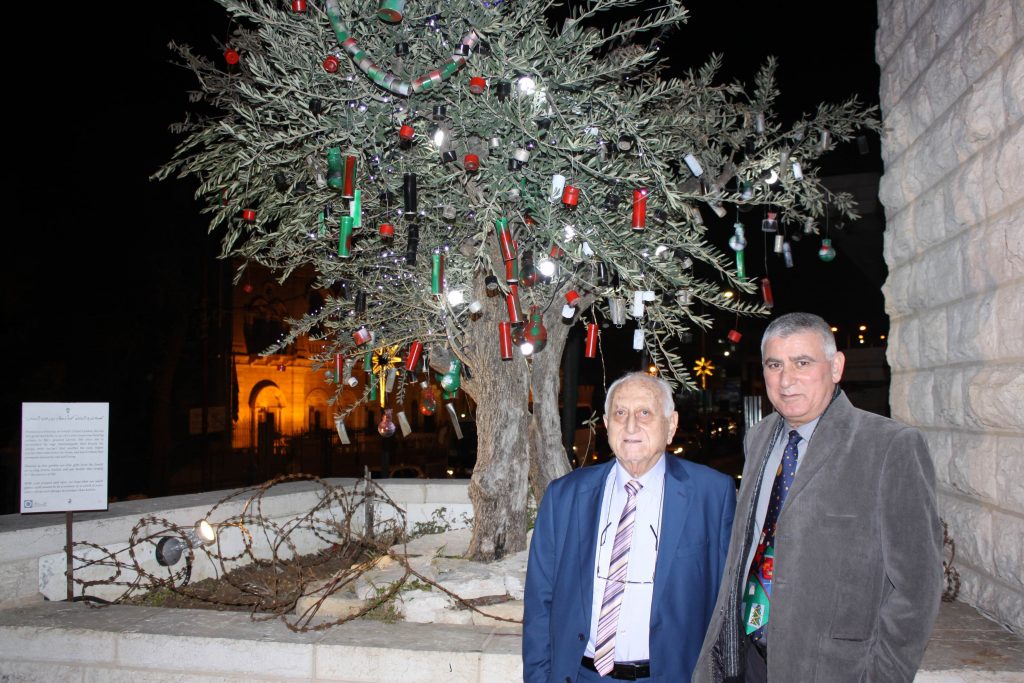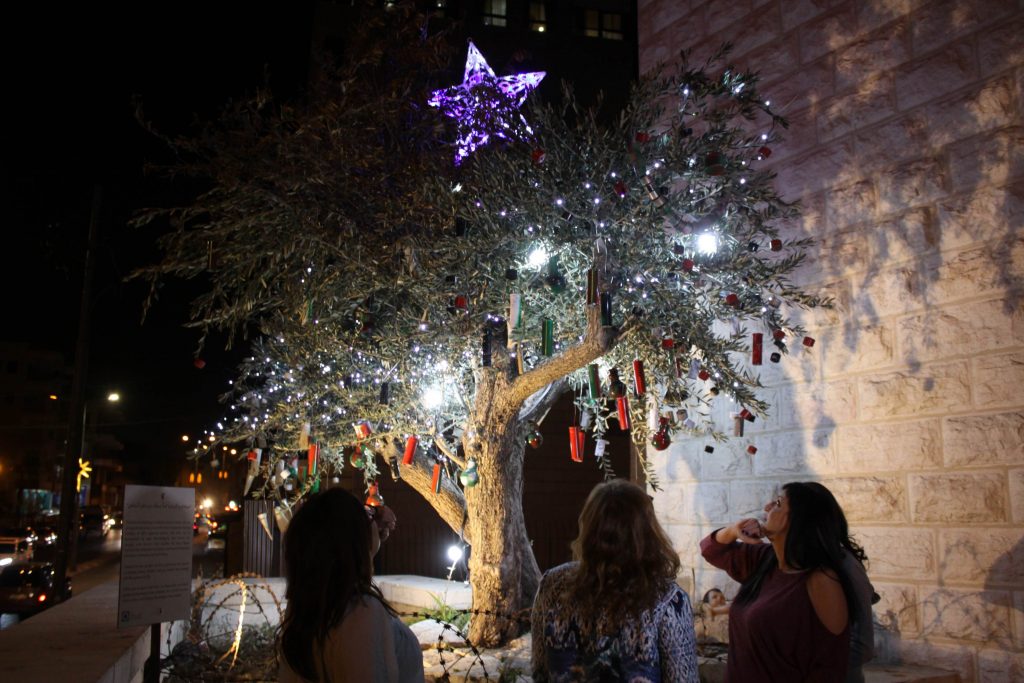Bethlehem, Palestine—On the evening of Friday, December 1st, 2017 a humble crowd huddled together around Bethlehem Museum’s small, but steadfast olive tree for the Museum’s first annual Christmas tree lighting ceremony. For the occasion, it was decided that decorating and illuminating an olive tree rather than a traditional conifer would best befit the Museum’s mission and vision—to highlight Palestinian culture and heritage through the eyes of its indigenous Christian community. The museum’s olive tree stands tall in its outdoor mezzanine as a powerful symbol of Palestinian rootedness in the region. The fact that olive trees can live and bear fruit for thousands of years despite difficult and changing conditions reflects the resilience and faithfulness of a proud people.
The olive tree was carefully decorated with empty tear gas canisters and bullet shells collected from Israeli attacks near the Separation Wall in Bethlehem. The tree décor was meant to acknowledge the cross Palestinians bear while highlighting the light of hope for a better future, symbolized by its many strings of lights, its guiding star perched at the tree’s peak and a manger holding the infant Jesus at its base.
Hosting the lighting was Mazen Karam, CEO of the Bethlehem Foundation, an organization dedicated to the development of Bethlehem. During Mr. Karam’s lighting speech, he commented: “This tree lighting highlights two important points…First, by using the olive tree, our indigenous tree as our Christmas tree, we call attention to the fact that we are standing on the very land in which the Prince of Peace was born, and although many throughout the world use the fir tree as a symbol of life in dark times, ours is also imbued with the same meaning…Second, by repurposing tear gas canisters and other weapons used against our children, we offer a message to the world that we choose peace; that we choose to turn the other cheek.”
People in the crowd were touched by the symbolism, noting that it was the first time they had ever heard of an olive tree used as the symbol of Christmas in Palestine. In attendance were members of the Arab Women’s Union, who founded the Museum alongside the Holy Land Christian Ecumenical Foundation, as well as Mr. Victor Batarsa, Former Mayor of Bethlehem, and dozens of community members who came from as far as Jerusalem—the other side of the Wall.
Khader Handal, ICT Officer for the Holy Land Christian Ecumenical Foundation, outlined the concept behind the decoration of the tree: “Our message to people worldwide is that we [Palestinians] want what everyone wants: to be free to experience peace, joy and love…we live in the city of peace, where Jesus was born, all we want is to live in peace.”
The museum’s olive tree is rooted amidst a garden nourishing the four herbs considered elemental in Palestine. A small sign planted at the tree’s base denotes the symbolism of each—sage to foster energy and perseverance; mint to soothe the soul; thyme to nourish the mind; and basil to encourage well-being. Standing under this modest tree, with its dazzling lights casting a glow on the captivated faces beneath it, one thing is for certain—the Christmas spirit of peace and brotherhood is alive and well in Bethlehem.
Bethlehem Museum’s Olive Tree Lighting is part of HCEF’s Bethlehem Heart of Christmas program, which also includes a Children’s Journey to Bethlehem on Friday, December 15th and A Christmas Celebration at the Birzeit Social Development and Cultural Center (BSCC).
Bethlehem Museum is a project of the Holy Land Christian Ecumenical Foundation. For more information about Bethlehem Museum, please visit: bethlehemmuseum.com

